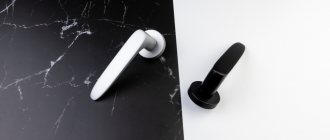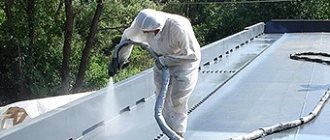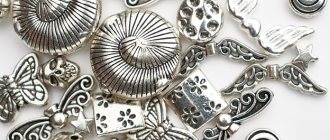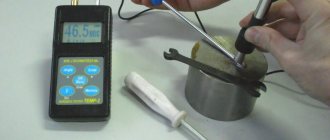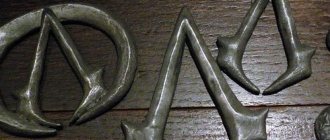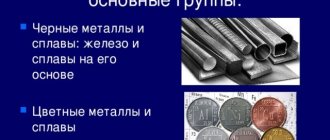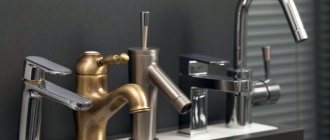In its usual understanding, a material such as cast iron is a fairly practical and cheap to manufacture product, which, by the way, has its own classification and labeling. At the same time, the indication of the brand can significantly influence the operational components of the material, ranging from its melting point to various areas of application.
A product can be characterized as cast iron only if it contains more than 2.14% carbon. Depending on its content and the addition of certain materials, specialists are able to make a workpiece so that it meets the requirements for further impacts, for example, in production, being a component of a machine.
Today we will tell you about the species diversity of cast iron as such. In addition, we will show the overall picture of how cast iron products should be marked and what designations may be encountered.
How is the marking of cast iron designated and deciphered?
Example of short designations for cast iron
One of the main advantages of cast iron is its widespread use as a casting alloy. Due to the characteristics of the material, almost anything can be made from it. Currently, these products are made everywhere, from automobile construction to serious military developments, for example, in tank building.
During the use of this material, metallurgical production came to the point that it modified the composition and made several of its varieties. This allows you to use the advantages of a particular brand in advance for specific tasks. In general, the following types and subtypes of cast iron are known today. We will look at them along with the markings.
Marking of gray cast iron
“SCH” - Gray cast iron is an alloy of silicon, iron and carbon. Moreover, the latter is in the composition in the form of graphite. When marking, according to GOST 1412-70, the letter “C” means gray , “C” means cast iron . When written, it usually occurs with numbers, for example SCH 00, SCH 12-28. In this case, the first numbers characterize the tensile bending strength .
At the same time, MFs are also divided into several groups, characterized by their properties and, as a consequence, the nature of their application:
- Ferritic and Ferritic-pearlitic. These include products that have a tensile strength of 12-28 units and a bending value of 28-40. Used for the manufacture of minor parts without large load requirements: decorative columns, fittings, etc.
- Perlite. MF 21-40 and 40-60. These types of cast iron are usually used in the production of heavy-duty parts, which during operation will be subject to significant dynamic loads and pressure. They are usually used to make: gears, piston heads, parts for machine tools, etc.
- Steely. SCh 24-44 and SCh 28-48. It is made with the addition of steel and is used for parts experiencing sliding loads, such as stationary frames.
- Modified. SCH 32-40 and 52-64. They are made by adding special additives to gray cast iron that improve certain characteristics of the material. If used correctly, you can get, for example, one that will crack less.
- Antifriction (AFS). They are made for parts whose operation involves friction, such as plain bearings. There are also several varieties of them: AChS-1 and AChS-2 are used for working with hardened parts. The material differs from each other in composition.
- ASF-3 is used for other cases.
For example, if you see the marking of cast iron - SCH 12-28, then you can say from it that we have gray ferritic cast iron with 12 tensile units and 28 bending units.
Cast iron sch 15
?Gray cast iron is widely used in mechanical engineering and is not a solid metal, but a porous metal sponge - an alloy of iron and graphite, the pores of which are filled with a loose non-metallic substance - graphite. Cast iron is very fragile. Its relative elongation at break is extremely high. It breaks into pieces with the blow.
2009.08.15 10-50-05 Cast iron rusted through???
The usual chemical composition of gray cast iron SCh 25 GOST 1412 - 95: C carbon 3.3%; Si silicon 2.1%; Mn manganese 0.8%; S sulfur no more than 0.15%; P phosphorus no more than 0.2% Mechanical properties of gray cast iron GOST 1412 - 85: strength limit (temporary tensile strength)? in SCH 15 > 147 MPa; SCH 18 > 176 MPa; SCH 25 > 245 MPa. Surface hardness SCH 15 - 163 ... 229 HB ; SCH 18 - 170 ... 229 NV ; SCH 25 - 180 ... 250 NV ; HB - HRC correspondence table. inspect
The beneficial effects of the influence of the highest concentrations of Si on scale resistance and growth resistance are associated with the formation of a constant graphite + silica ferrite structure. According to the degree of increase in Si content, critical places are located at higher temperatures. Thus, at 6% Si, the Ac 1 point is located around 950 °C, and at 7% Si - about 1000 °C. Silicon, penetrating into a strong solution, increases the temperature of formation of the fragile wustite phase (Fe 3 O 4), i.e., it increases the resistance of the metal base to oxidation.
Molybdenum is an intense carbide-forming element and inhibits graphitization. The strength and hardness of cast iron increases with increasing molybdenum content. With increasing molybdenum content, the strength of cast iron increases linearly : 1% Mo increases the strength by approximately 1 kg/mm 2 at any degree of eutecticity from 0.8 to 1.0. The impact strength does not increase, and even increases slightly. Molybdenum increases the strength of cast iron at elevated temperatures. Maximum strength is achieved at a content of 1.9% Mo, then a drop in properties occurs due to the formation of ledeburite. The increase in hardness due to increased homogeneity is not accompanied by a deterioration in machinability. Molybdenum also increases the wear resistance of cast iron and its growth stability.
IMG_7309
Another class of castings includes base and body parts of increased strength or wear resistance. To ensure the required strength and rigidity of cast iron in castings (in areas that dominate the section thickness), it is necessary to have a tensile strength limit of about 20 - 25 kg/mm 3. Depending on the wall thickness of the castings, to ensure such strength, it is recommended to use the following grades of gray cast iron : SCh 15 - 32, MF 21 - 40 and MF 28 - 48.
Related posts:
- Cast iron sch15
- Gray cast iron
- Cast iron
- Gray cast iron application
- Gray iron castings
We have the latest information about large garbage bags.
Marking of ductile iron
In the production of high-strength cast iron, the addition of alkali and alkaline earth metals is used. Thanks to this, the metal base of the material is strengthened. The result is a workpiece that can withstand mechanical loads that carbon steel can withstand.
tensile strength , and the second shows elongation .
HF is used to produce parts and housings in heavy industry. In this case, you can also find anti-friction versions. In particular, at the moment there are AChV 1 and AChV 2, which means high-strength anti-friction cast iron.
Ductile iron marking
Malleable cast iron has found its application in areas that require high wear resistance and resistance to dynamic loads. In everyday life, these can be found even at home, for example: nuts, hooks, hubs, brackets, couplings.
This material is obtained by special temperature conditions and processing of white cast iron
According to GOST, the marking of this type of cast iron is usually indicated as “KCH”. In this case, there are also numbers indicating the tensile strength and relative elongation of the material.
Brief description of all brands and markings
If you do not need to study GOST and textbooks on metallurgy, then we will provide a brief description and instructions for selecting and deciphering a particular grade of cast iron. To begin with, you should know that cast iron is divided into 3 types:
- Gray - This type of graphite is worm-shaped or plastic. It is marked as “SCh” (GOST 1412-85)
- High Strength - Graphite has a spherical shape. Marked as “HF” (GOST 7293-85).
- Malleable - Flaky model. Marked as “KCH” (GOST 1215-85).
Also, depending on the situation, for each type of cast iron products, conditions are provided for operation in constant friction mode. In this case, a model of anti-friction cast iron was additionally developed, labeled as “ACh”. Depending on the type of material the AC is made from, a 3rd letter is added during the production process. For example, AChS - anti-friction gray cast iron or AChV (high-strength), etc.
Decoding the markings of cast iron and non-metallic materials.
Goal of the work:
• recognize and classify structural and raw materials by appearance, origin, properties;
• determine the types of structural materials (cast iron and non-metallic materials);
• select materials for structures according to their purpose and operating conditions;
learn to decipher the markings of cast iron and non-metallic materials.
General theoretical information.
Part 1. Cast iron
Cast iron is an iron-based alloy. The difference between cast iron and steel is its higher carbon content - more than 2.14% and up to 6.67%. The most widespread are cast irons containing 3–3.5% carbon. Cast iron contains the same impurities as steel, i.e. silicon, manganese, sulfur and phosphorus. Cast irons in which all the carbon is in a chemical combination with iron are called white (by the type of fracture), and cast irons in which all or most of the carbon is graphite are called gray. White cast iron always contains one more structural component - ledeburite. This is a eutectic, i.e. a uniform mechanical mixture of austenite and cementite grains obtained during the crystallization process, it contains 4.3% carbon. Ledeburite is formed at a temperature of +1147 °C.
Cast iron is the primary product of processing iron ores by smelting in blast furnaces. The structure of cast iron can have different components depending on what part of the carbon is in a structurally free state. This also determines the name of cast iron: white, gray, high-strength, malleable.
Cast iron is the most common iron-carbon casting material, containing over 2% carbon, up to 4.5% silicon, up to 1.5% manganese, up to 1.8% phosphorus and up to 0.08% sulfur. Cast iron has high casting properties, therefore it is widely used in foundries as a structural material. Sliding bearings are made from cast iron, which has a low coefficient of friction.
The mechanical properties of cast iron are determined by its structure, mainly the graphite component. Cast iron can be considered as steel penetrated by graphite, which plays the role of cuts that weaken the metal base of the structure. In this case, the mechanical properties will depend on the number, size and nature of the distribution of graphite inclusions.
Graphite, breaking the continuity of the metal base, makes cast iron insensitive to all kinds of external stress concentrators (surface defects, cuts, recesses, etc.). As a result, gray cast iron has approximately the same structural strength in castings of a simple shape or with a smooth surface, and in complex shapes with a notch or a poorly machined surface. Graphite increases the wear resistance and anti-friction properties of cast iron due to its own “lubricating” effect and increasing the strength of the lubricant film.
White and bleached cast iron is an alloy of iron and carbon in the form of iron carbide Fe3C, i.e. carbon is in a bound state in the form of a chemical compound - cementite. The carbon content of white cast iron ranges from 2.14 to 6.67%. White cast iron, due to the presence of cementite in it, has high hardness, is brittle and practically cannot be machined, therefore it has limited use. Bleached iron castings are those in which the surface layers have the structure of white (or half-cast) cast iron, and the core is gray cast iron. There may be a surface layer between these zones. Chilling to a certain depth (12-30 mm) is a consequence of the rapid cooling of the surface resulting from casting cast iron in metal molds or in a sand mold. High surface hardness (HB 400-500) provides good resistance to wear, especially abrasive wear, which is why sheet mill rolls, wheels, balls for mills, etc. are made from bleached cast iron.
Gray cast iron is widely used in mechanical engineering. It received this name from the gray color of the fracture, due to the presence of free carbon in the form of graphite in the cast iron structure. Gray cast iron is marked with the letters S - gray and Ch - cast iron (GOST 1412-70). The letters are followed by numbers. The first numbers indicate the average tensile strength, and the second numbers indicate the average bending strength. The bending strength is used to assess the ductility of cast iron, because the relative elongation of all gray cast irons is practically zero. Gray cast irons can be divided into groups according to their properties and application.
Ferritic and ferrite-pearlite cast irons
(SCh 00, SCh 12-28, SCh 15-32, SCh 18-36) have tensile strengths of 12-28 and bending strengths of 28-40 kgf/mm2. These cast irons are used for the manufacture of low-critical parts that experience low loads during operation. For example, SCh 12-28 cast iron is used for building columns, foundation slabs, and SCh 15-32 and SCh 18-36 cast irons are used for cast light-loaded parts of agricultural machines, machine tools, cars and tractors, fittings, etc.
Pearlitic cast irons
(SCh 21-40, SCh 24-44, SCh 28-48, SCh 32-52, SCh 36-56, SCh 40-60) are used for casting beds of powerful machines and mechanisms, pistons, cylinders, parts subject to wear in conditions of high pressure (compressor, valve and turbine castings, diesel cylinders, engine blocks, parts of metallurgical equipment, etc.).
Anti-friction cast irons
used for the manufacture of sliding bearings, bushings and other parts that operate under friction with metal, often in the absence of lubrication. These cast irons must provide low friction (low coefficient of friction), i.e. anti-friction.
Antifriction cast irons are manufactured in the following grades (A - antifriction, Ch - cast iron, S - gray): AChS-1, AChS-2, AChS-3.
High-strength nodular cast iron is produced by introducing up to 0.09% magnesium and up to 0.05% cerium into liquid gray cast iron before pouring it into molds. Ductile iron has higher carbon and silicon content and lower manganese content. This cast iron combines the valuable properties of steel and cast iron. Under the influence of magnesium, graphite during crystallization takes not a plate-like, but a spherical shape. Nodular graphite weakens the metal base of cast iron significantly less than flake graphite. Unlike lamellar graphite, spherical graphite is not an active stress concentrator. Nodular cast irons have higher mechanical properties that are not inferior to cast carbon steel, while maintaining good casting properties and machinability, the ability to dampen vibrations, high wear resistance, etc.
Ductile iron is marked with the letters HF, followed by numbers. The first digit of the brand shows the average tensile strength, the second - relative elongation.
For example: HF 38–17, HF 42–12, HF 45–5, HF 50–7, HF 100–2, HF 120–2. High-strength cast iron castings are widely used in various industries: in the automotive and diesel industries for crankshafts, cylinder covers and other parts; in heavy engineering - for many parts of rolling mills; in forging and press mechanical engineering for hammer hammers, press traverses, rolling rolls, in the chemical and oil industries - for pump housings, valves, etc. High-strength cast irons are also used for the manufacture of machine parts, press-forging equipment, operating in bearings and other friction units at elevated and high pressures (up to 120 kgf/mm2). Antifriction cast irons with globular graphite are produced in two grades: AChV-1 and AChV-2.
Pearlitic high-strength cast iron AChV-1 is intended for operation in friction units with increased peripheral speeds in conjunction with a hardened and normalized shaft. Anti-friction cast iron AChV-2 is used in conjunction with a “raw” (as delivered) shaft.
Malleable cast iron is produced by prolonged heating at high temperatures (white cast iron annealing). As a result of annealing, flake-shaped graphite is formed. Compared to lamellar graphite, such graphite reduces the strength and ductility of the metal base of the cast iron structure less. The metal base of malleable cast iron is ferrite (ferritic malleable cast iron) and less commonly perlite (pearlitic malleable cast iron). Ferritic malleable cast iron, which is used in mechanical engineering, has the greatest ductility.
Malleable cast iron is marked with CN and numbers. The first two numbers indicate the tensile strength and the second - the relative elongation. Ductile iron castings are used for parts operating under shock and vibration loads. For example, cast irons of the ferritic class KCh 35–10 and KCh 37–12 are used for the production of parts operated under high dynamic and static loads - crankcases, gearboxes, hubs, etc., and cast iron grades KCh 30–6 and KCh 33– 8 - for the manufacture of less critical parts - clamps, nuts, valves, pads, etc. The hardness of ferritic cast iron is HB 163.
Pearlitic malleable cast irons KCh 50-4, KCh 56-4, KCh 60-3 and KCh 63-2 have high strength, moderate ductility and good anti-friction properties. The hardness of pearlitic cast iron is NV 241-249. Cord shaft forks, links and rollers of conveyor chains, bushings, couplings, brake pads, etc. are made from pearlitic malleable cast iron. Malleable cast iron is used mainly for the manufacture of thin-walled parts, in contrast to high-strength magnesium cast iron, which is used for parts with large cross-sections.
Task No. 1
Write out the grades of cast iron from the text, distribute them into groups and write down the chemical composition and mechanical properties.


